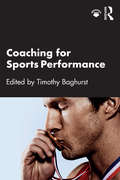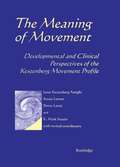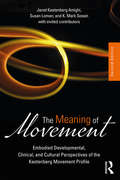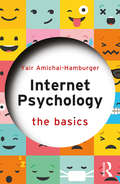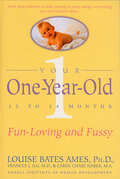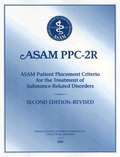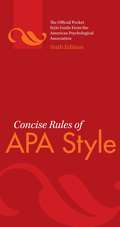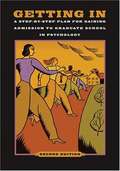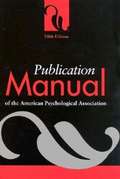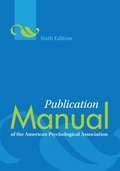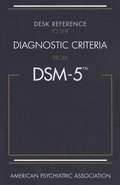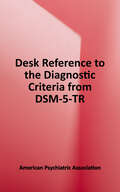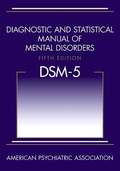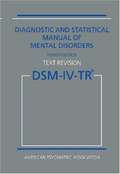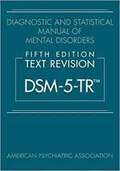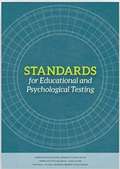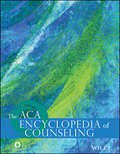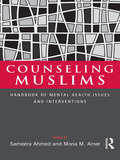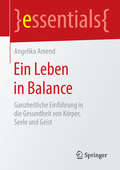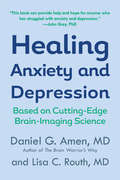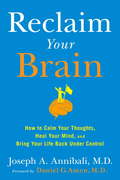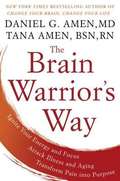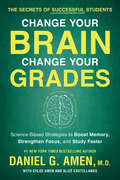- Table View
- List View
Coaching for Sports Performance
by AminCoaching for Sports Performance provides a practical overview of the many disciplines necessary to be an effective coach. Using experts from across the sports science fields, this book teaches readers the core concepts in a practical, easy to understand style, separated into four sections. Part I explains the fundamentals of effective coaching including the development of coaching philosophies, best practices for coaching effectively, how athletic technique matures, and what coaches can and cannot do in specific health-related situations. Part II provides practical ways to improve athletic performance where readers learn the fundamentals of biomechanics and how to use technology to analyze performance, the physiological functions and adaptations to exercise, how the body can be physically trained and properly fueled, and mental strategies to optimize athletic outcomes. Part III introduces the business side of coaching, the important responsibilities involved in sport management, and practical methods for marketing as well as working with the media. Last, Part IV offers specific strategies for coaching across age and skill levels. Chapters are split into youth and high school, collegiate, and professional athletes, and the nuances of coaching each level are explained. Being called "Coach" is an honor, but with this title comes the responsibility of being professional, knowledgeable, and effective. Coaching for Sports Performance provides the platform for becoming a successful coach and assisting athletes in achieving their potential. Coaching for Sports Performance provides a practical overview of the many disciplines necessary to be an effective coach.
The Meaning of Movement: Developmental and Clinical Perspectives of the Kestenberg Movement Profile
by Janet Kestenberg Amighi Susan Loman Penny Lewis K. Mark SossinThe primary objective of this book is to present the Kestenberg Movement Profile (KMP)--a multi-tiered system for the notation of observed movement patterns, classification of these patterns, and analysis of an individual's movement repertoire.
The Meaning of Movement: Embodied Developmental, Clinical, and Cultural Perspectives of the Kestenberg Movement Profile
by Janet Kestenberg Amighi Susan Loman K. Mark SossinThe new edition of The Meaning of Movement serves as a guide to instruction in the Kestenberg Movement Profile (KMP) and as the system’s foremost reference book, sourcebook, and authoritative compendium. This thoroughly updated volume interweaves current developmental science, cultural perspectives, and KMP-derived theory and methods for research and techniques for clinical practice. Through the well-established KMP, clinicians and researchers in the realms of nonverbal behavior and body movement can inform and enrich their psychological interpretations of movement. Interdisciplinary specialists gain a way to study the embodiment of cognition, affects, learning styles, and interpersonal relations based on observation and analysis of basic qualities of movement.
Internet Psychology: The Basics
by Yair Amichai-HamburgerWe can't imagine our lives without the Internet. It is the tool of our existence; without it we couldn't work, plan our social and leisure activities, and interact with friends. The Internet’s influence on contemporary society extends across every aspect of our personal and professional lives, but how has this altered us in psychological terms? How are we to understand how the Internet can promote enormous amounts of caring and kindness to strangers and yet be the source of unremitting acts of terror? This book, grounded in the latest cutting-edge research, enhances our understanding of how we, and our children, behave online. It explores questions such as: Why does our self-control abandon us sometimes on the Internet? Why does the Internet create a separate realm of social and personal relationships? How does all that change us as people? Are youngsters really as exposed and threatened on the web as people think? Internet Psychology: The Basics is a vital and fascinating guide to the online world, drawing on classic theories of human behaviour to shed fresh light on this central facet of modern life. It argues that, even in an age of constant technological advancement, our understanding of the human psyche remains rooted in these well-established theories. Embracing both positive and negative aspects of Internet use, this easy introduction to the subject will appeal to students and general readers alike.
Your One-Year-Old: The Fun-Loving, Fussy 12-To 24-Month-Old
by Louise Bates Ames Frances L. IlgThe child from twelve to twenty-four months of age is a joy to have around—some of the time, that is. This child is growing at an incredible rate, learning to walk, learning to touch, learning to love, and learning to say &“No!&” for the first time. All of this can be quite a handful for the new parent. In this first book in the series from the renowned Gesell Institute, which includes Your One-Year-Old through Your Ten- to Fourteen-Year-Old, the authors discuss all important questions that concern the twelve- to twenty-four-month-old child. They examine the various stages of development between infancy and toddlerhood: what new things the child can do; how the child acts with parents and other people; what the child thinks and feels. Included in this book: • Sleeping and feeding routines • A one-year-old&’s view of the world—and herself • Accomplishments and abilities • The basics of toilet training • Stories from real life • A list of age-appropriate toys and books • A bibliography for parents &“Louise Bates Ames and her colleagues synthesize a lifetime of observation of children, consultation, and discussion with parents. These books will help parents to better understand their children and will guide them through the fascinating and sometimes trying experiences of modern parenthood.&”—Donald J. Cohen, M.D., Director, Yale Child Study Center, Irving B. Harris Professor of Child Psychiatry, Pediatrics, and Psychology, Yale School of Medicine
No Way Renee: The Second Half of My Notorious Life
by John Ames Renee RichardsIn 1975, at the age of forty, Richard Raskind, a renowned eye surgeon and highly ranked amateur tennis player, "died," and Renée Richards was "born," in what was to become the most public and highly scrutinized sex reassignment to date. It was not until Renée Richards was discovered playing in an amateur tennis tournament that the world took notice. Extensive media coverage and criticism thrust Renée reluctantly into the spotlight, sparking an intense public debate over her private life. Now, at seventy-two, Richards looks back and speaks frankly about all aspects of her complicated and often notorious life in this eye-opening, thought-provoking memoir. Richards' honest and compelling narrative explores the dichotomy between the successful life she lived as Dr. Richard Raskind, who seemed to have everything (devoted friends, a beautiful wife and son, a stellar record of academic and professional achievement, and outstanding athletic ability), and a secret life of struggle with a drive that could not be suppressed, even by years of psychotherapy and the force of a considerable will. Richards takes readers through her difficult decision to undergo surgery and the complex mixture of relief and continued frustration that came with the realization of her new identity. Discussing life after her transformation, Richards candidly relates the details, trials, and pleasures of her romantic life as well as fascinating stories about her tennis career, including her experiences as Martina Navratilova's coach. She also provides an intimate account of her difficult but rewarding relationship with her rebellious son: runaway teenager, high-stakes Vegas gambler, karate champion, and entrepreneur. She describes the deterioration of a once-loving marriage and the challenges of reclaiming her place at the forefront of her demanding medical specialty. Having lived as a woman almost as long as she lived as a man, Richards draws on a personal history that illuminates thirty years of remarkable change in society's attitude toward gender issues. Her absorbing and inspiring story, at once heartbreaking and uplifting, is a testimony to how far we have progressed in our ability to discuss and accept sexuality in all its iterations, as well as a reminder of how far we still must travel.
The Morning Notes of Adelbert Ames, Jr.
by Adelbert AmesThis volume may come as a surprising adventure of the mind even to his peers in the field of perceptual psychology. Here is a book as unusual as the innovating research it describes. The main body consists of "morning notes" - memoranda written by Ames as progressive clarifications of his thinking and investigation into the "seeming" by which human beings live and relate themselves to the fundamentally unknowable world of assumed "reality".
ASAM PPC-2R: ASAM Patient Placement Criteria For The Treatment Of Substance-related Disorders
by American Society of Addiction Medicine Staff David Mee-Lee Gerald D. Shulman Marc Fishman David R. Gastfriend Julia Harris GriffithThe American Society of Addiction Medicine Patient Placement Criteria 2R (ASAM PPC-2R) is the most widely used and comprehensive set of guidelines for placement, continued stay and discharge of patients with addiction disorders. The ASAM PPC-2R is officially required in over 30 states and provides the addiction field with the nomenclature for describing the continuum of addiction services. The language is consistent with the American Psychiatric Associations Diagnostic and Statistical Manual of Mental Disorders (DSM-IV). <P><P> The second revised edition has been updated to better meet the needs of patients with co-occurring mental and substance-related disorders ("dual diagnosis"). <P> The ASAM Patient Placement Criteria 2R gives medical professionals seeking assistance in providing timely, appropriate, and effective care a holistic and multidimensional approach that matches patient needs to specific treatment services.
Concise Rules Of APA Style
by American Psychological Association StaffThis text offers writing and formatting standards for students, teachers, researchers, and clinicians working in the field of psychology. It provides complete guidance on the rules of style that are critical for clear communication.
Getting In: A Step-by-Step Plan For Gaining Admission to Graduate School In Psychology (Second Edition)
by American Psychological AssociationGetting In, Second Edition is an update of the American Psychological Associations essential resource for anyone considering graduate study in psychology. This handy, readable book simplifies the process for applicants and increases their chances of being accepted. Useful timelines, tips, and tools break the tasks into manageable steps and help readers define their goals, select programs, and navigate the application process. A monthly timetable and detailed worksheets for selecting the best program matches are included, and a resource section provides a list of publications and organizations that are useful in the various phases of applying. Readers will learn what criteria admissions committees use to evaluate applicants, how to improve their qualifications, and how to showcase their talents in personal essays, letters of recommendations, and preselection interviews. The costs of a graduate education and financial aid information specific to graduate students are also discussed. Members of special populations, such as women, ethnic minorities, gay and lesbian applicants, and applicants with disabilities will find resources and guidance particular to their needs. While applying to graduate school can be challenging, this book demystifies the process and allays students concerns about how to tackle it.
Publication Manual of the American Psychological Association (5th edition)
by American Psychological AssociationIn 1999 the APA Publications and Communications Board authorized work to begin on this fifth edition of the Publication Manual.
Publication Manual of the American Psychological Association (6th Edition)
by American Psychological AssociationThe style manual of choice for writers, editors, students, and educators in the social and behavioral sciences, this updated "Publication Manual" provides invaluable guidance on all aspects of the writing process, from the ethics of authorship to the word choice that best reduces bias.
Desk Reference to the Diagnostic Criteria From DSM-5
by American Psychiatric AssociationThe Desk Reference to the Diagnostic Criteria From DSM-5 is meant to be used in conjunction with the full DSM-5. Its proper use requires familiarity with the text descriptions for each disorder that accompany the criteria sets. This handy reference provides all ICD-9-CM and ICD-10-CM codes, coding notes, and recording procedures included in DSM-5. Clinicians will find additional reference information in DSM-5, including Section III: Emerging Measures and Models (containing assessment measures, cultural formulation and interviews, an alternative DSM-5 model for personality disorders, and conditions for further study) and the DSM-5 Appendix (containing highlights of changes from DSM-IV, glossaries of technical and cultural terms, and alphabetical and numerical listings of DSM-5 diagnoses and codes).
Desk Reference to the Diagnostic Criteria from DSM-5-TR
by American Psychiatric AssociationThe Desk Reference to the Diagnostic Criteria From DSM-5-TR is a concise, affordable companion to the ultimate psychiatric reference, DSM-5-TR. It includes the fully revised diagnostic classification, as well as all the diagnostic criteria from DSM-5-TR in an easy-to-use format. This handy reference provides quick access to the information essential to making a diagnosis. Designed to supplement DSM-5-TR, this convenient guide will assist all mental health professionals as they integrate the DSM-5-TR diagnostic criteria into their diagnoses. The Diagnostic and Statistical Manual of Mental Disorders stands alone as the most authoritative reference available for clinical practice in the mental health field. The Desk Reference to the Diagnostic Criteria From DSM-5-TR distills the most crucial, updated diagnostic information from this volume to provide clinicians with an invaluable resource for effectively diagnosing mental disorders, ranging from the most prevalent to the least common.
Diagnostic and Statistical Manual of Mental Disorders, (DSM-5), 5th edition
by American Psychiatric AssociationThis new edition of Diagnostic and Statistical Manual of Mental Disorders (DSM-5®), used by clinicians and researchers to diagnose and classify mental disorders, is the product of more than 10 years of effort by hundreds of international experts in all aspects of mental health. Their dedication and hard work have yielded an authoritative volume that defines and classifies mental disorders in order to improve diagnoses, treatment, and research. The criteria are concise and explicit, intended to facilitate an objective assessment of symptom presentations in a variety of clinical settings -- inpatient, outpatient, partial hospital, consultation-liaison, clinical, private practice, and primary care. New features and enhancements make DSM-5® easier to use across all settings: • The chapter organization reflects a lifespan approach, with disorders typically diagnosed in childhood (such as neurodevelopmental disorders) at the beginning of the manual, and those more typical of older adults (such as neurocognitive disorders) placed at the end. Also included are age-related factors specific to diagnosis. • The latest findings in neuroimaging and genetics have been integrated into each disorder along with gender and cultural considerations. • The revised organizational structure recognizes symptoms that span multiple diagnostic categories, providing new clinical insight in diagnosis. • Specific criteria have been streamlined, consolidated, or clarified to be consistent with clinical practice (including the consolidation of autism disorder, Asperger's syndrome, and pervasive developmental disorder into autism spectrum disorder; the streamlined classification of bipolar and depressive disorders; the restructuring of substance use disorders for consistency and clarity; and the enhanced specificity for major and mild neurocognitive disorders). • Dimensional assessments for research and validation of clinical results have been provided. • Both ICD-9-CM and ICD-10-CM codes are included for each disorder, and the organizational structure is consistent with the new ICD-11 in development. The Diagnostic and Statistical Manual of Mental Disorders, Fifth Edition, is the most comprehensive, current, and critical resource for clinical practice available to today's mental health clinicians and researchers of all orientations. The information contained in the manual is also valuable to other physicians and health professionals, including psychologists, counselors, nurses, and occupational and rehabilitation therapists, as well as social workers and forensic and legal specialists.
Diagnostic and Statistical Manual of Mental Disorders, (DSM-IV), 4th edition
by American Psychiatric AssociationSince the DSM-IV was published in 1994, we've seen many advances in our knowledge of psychiatric illness. This Text Revision incorporates information culled from a comprehensive literature review of research about mental disorders published since DSM-IV was completed in 1994. Updated information is included about the associated features, culture, age, and gender features, prevalence, course, and familial pattern of mental disorders. The DSM-IV-TR brings this essential diagnostic tool up-to-date, to promote effective diagnosis, treatment, and quality of care. Now you can get all the essential diagnostic information you rely on from the DSM-IV along with important updates not found in the 1994 edition. Stay current with important updates to DSM-IV-TR TM. Benefit from new research into Schizophrenia, Asperger's Disorder, and other conditions Utilize additional information about the epidemiology and other facets of DSM conditions Update ICD-9-CM codes implemented since 1994 (including Conduct,Disorder, Dementia, Somatoform Disorders) Sections on prevalence, gender/age/culture, course, and familial pattern have also been revised to reflect recent research findings. More comprehensive differential diagnoses have been incorporated for many of the disorders.
Diagnostic and Statistical Manual of Mental Disorders, Text Revision (DSM-5-TR)
by American Psychiatric AssociationThe Diagnostic and Statistical Manual of Mental Disorders, Fifth Edition, Text Revision (DSM-5-TR), is the most comprehensive, current, and critical resource for clinical practice available to today's mental health clinicians and researchers. <p><p>DSM-5-TR includes the fully revised text and references, updated diagnostic criteria and ICD-10-CM codes since DSM-5 was published in 2013. It features a new disorder, Prolonged Grief Disorder, as well as codes for suicidal behavior available to all clinicians of any discipline without the requirement of any other diagnosis. <p><p>With contributions from over 200 subject matter experts, this updated volume boasts the most current text updates based on the scientific literature. Now in four-color and with the ability to authenticate each printed copy, DSM-5-TR provides a cohesive, updated presentation of criteria, diagnostic codes, and text. <p><p>This latest volume offers a common language for clinicians involved in the diagnosis and study of mental disorders and facilitates an objective assessment of symptom presentations across a variety of clinical settings—inpatient, outpatient, partial hospital, consultation-liaison, clinical, private practice, and primary care. <p><p>Stay current with these important updates in DSM-5-TR: • Fully revised text for each disorder with updated sections on associated features, prevalence, development and course, risk and prognostic factors, culture, diagnostic markers, suicide, differential diagnosis, and more.• Addition of Prolonged Grief Disorder (PGD) to Section II—a new disorder for diagnosis• Over 70 modified criteria sets with helpful clarifications since publication of DSM-5• Fully updated Introduction and Use of the Manual to guide usage and provide context for important terminology• Considerations of the impact of racism and discrimination on mental disorders integrated into the text• New codes to flag and monitor suicidal behavior, available to all clinicians of any discipline and without the requirement of any other diagnosis• Fully updated ICD-10-CM codes implemented since 2013, including over 50 coding updates new to DSM-5-TR for substance intoxication and withdrawal and other disorders• Updated and redesigned Diagnostic Classification <p><p>This manual is a valuable resource for other physicians and health professionals, including psychologists, counselors, nurses, and occupational and rehabilitation therapists, as well as social workers and forensic and legal specialists. The new DSM-5-TR is the most definitive resource for the diagnosis and classification of mental disorders.
Standards for Educational and Psychological Testing
by American Educational Research Association American Psychological Assocation National Council on Measurement in EducationThese testing standards are a product of the American Educational Research Association, the American Psychological Association (APA), and the National Council on Measurement in Education (NCME). Published collectively by the three organizations since 1966, it represents the gold standard in guidance on testing in the United States and in many other countries.
The ACA Encyclopedia of Counseling
by American Counseling AssociationThis premiere counseling reference book is ideal for students, educators, supervisors, researchers, and practitioners seeking to quickly update or refresh their knowledge of the most important topics in counseling. More than 400 entries span the 2009 CACREP core areas used in counselor preparation, continuing education, and accreditation of counseling degree programs, making this a perfect text for introductory counseling classes or for use as a study guide when preparing for the National Counselor Exam. This encyclopedia makes counseling come alive through its user-friendly writing style; instructive examples that connect readers to practice, teaching, supervision, and research; and its helpful cross-referencing of entries, boldfaced important terminology, and suggested resources for further study. *Requests for digital versions from the ACA can be found on wiley.com. *To request print copies, please visit the ACA website here: http://isgweb.counseling.org/ISGweb/Purchase/ProductDetail.aspx?Product_code=72879 *Reproduction requests for material from books published by ACA should be directed to permissions@counseling.org
Counseling Muslims: Handbook of Mental Health Issues and Interventions
by Mona M. Amer Sameera AhmedA young female client presents with anorexia nervosa and believes that her problem has its roots in magic; parents are helpless in the face of their son's substance abuse issues; an interracial couple cannot agree on how to discipline their children.How would you effectively help these clients while balancing appropriate interventions that are sensitive to religious, cultural, social, and gender differences? This handbook answers these difficult questions and helps behavioral health practitioners provide religio-culturally-competent care to Muslim clients living in territories such as North America, Australia, and Europe.The issues and interventions discussed in this book, by authoritative contributors, are diverse and multifaceted. Topics that have been ignored in previous literature are introduced, such as sex therapy, substance abuse counseling, university counseling, and community-based prevention. Chapters integrate tables, lists, and suggested phrasing for practitioners, along with case studies that are used by the authors to help illustrate concepts and potential interventions.Counseling Muslims is also unique in its broad scope, which reflects interventions ranging from the individual to community levels, and includes chapters that discuss persons born in the West, converts to Islam, and those from smaller ethnic minorities. It is the only guide practitioners need for information on effective service delivery for Muslims, who already bypass significant cultural stigma and shame to access mental health services.
Ein Leben in Balance: Ganzheitliche Einführung in die Gesundheit von Körper, Seele und Geist (essentials)
by Angelika AmendAngelika Amend vermittelt, dass die drei Komponenten ,,Körper - Seele - Geist" nicht von einander zu trennen sind, sondern dass eine gesunde Balance wichtig ist, um bis ins hohe Alter gesund, vital und zufrieden zu leben: Letztlich ist Gesundheit ein Geschenk, zu dem aber jeder wesentliche Beiträge leisten kann. In ihrer langjährigen Berufserfahrung durfte die Autorin erkennen, dass die körperliche Gesundheit und Vitalität ein wichtiges Kapital im Leben sind. Sie möchte Interessierte anleiten, Verantwortung für den eigenen Körper zu übernehmen, Wege aufzeigen und Tipps geben, wie ein harmonisches Leben gelingen kann.
Healing Anxiety and Depression: The Revolutionary Brain Based Program That Allows You To See
by Daniel G. Amen Lisa C. RouthBased on brain-imaging science, Healing Anxiety and Depression reveals the major anxiety and depression centers of the brain, offers tools to determine the specific type of disorder, and provides a comprehensive program for treating both anxiety and depression. <P><P>Dr. Daniel Amen—a pioneer in uncovering the connections between the brain and behavior—presents his revolutionary approach to treating anxiety and depressive disorders. Based on brain science—and featuring treatment plans that include medication, diet, supplements, exercise, and social and therapeutic support—this groundbreaking book will help you conquer these potentially devastating disorders and change the way you think about anxiety and depression. <P><P>Healing Anxiety and Depression: • Reveals 7 types of anxiety and depression • Provides proven-effective treatment plans for each type • Explains the source of anxiety and depression through brain images • Includes a self-diagnostic type-determining test
Reclaim Your Brain
by Daniel G. Amen Joseph A. AnnibaliA prescriptive guide to restoring cognitive calm, based on Amen Clinic Chief Psychiatrist Dr. Joseph Annibali's three decades of treating patients who suffer from overloaded, over-stimulated brains. Dr. Joseph Annibali has treated thousands of people with overloaded, over-stimulated brains. Some people describe their brain as being "in chaos"; others feel that their brain is "on fire." But whether they are ultimately diagnosed with "normal" anxiety, disabling OCD, depression, bipolar disorder, or even substance abuse, the underlying problem is a Too-Busy-Brain, a great irritant that interferes with attention, concentration, focus, mood, and often much more. It may even be a sign of undetected damage to either the brain or the body itself. But through practical strategies, understandable explanations, and prescriptive mind-management techniques, Dr. Annibali will help readers finally reclaim their brains and get back in control of their lives.From the Hardcover edition.
The Brain Warrior's Way: Ignite Your Energy and Focus, Attack Illness and Aging, Transform Pain into Purpose
by Daniel G. Amen Tana AmenNew York Times bestselling authors Dr. Daniel Amen and Tana Amen are ready to lead you to victory... When trying to live a healthy lifestyle, every day can feel like a battle. Forces are destroying our bodies and our minds. The standard American diet we consume is making us sick; we are constantly bombarded by a fear-mongering news media; and we're hypnotized by technical gadgets that keep us from our loved ones. Even our own genes can seem like they're out to get us. But you can win the war. You can live your life to the fullest, be your best, and feel your greatest, and the key to victory rests between your ears. Your brain runs your life. When it works right, your body works right, and your decisions tend to be thoughtful and goal directed. Bad choices, however, can lead to a myriad of problems in your body. Studies have shown that your habits turn on or off certain genes that make illness and early death more or less likely. But you can master your brain and body for the rest of your life with a scientifically-designed program: the Brain Warrior's Way. The Brain Warrior's Way is your arsenal to win the fight to live a better life. The Amens will guide you through the process, and give you the tools to take control. So if you're serious about your health, either out of desire or necessity, it's time to arm yourself and head into battle. Master your brain and body for the rest of your life. This is not a program to lose 10 pounds, even though you will do that--and lose much more if needed. You can also prevent Alzheimer's, reverse aging, and improve your: -Overall health -Focus -Memory -Energy -Work -Mood Stability -Flexibility -Inner Peace -Relationships The Amens have helped tens of thousands of clients over thirty years, and now they can help you. It is time to live a better life--right now!From the Hardcover edition.
Change Your Brain, Change Your Grades: The Secrets of Successful Students: Science-Based Strategies to Boost Memory, Strengthen Focus, and Study Faster
by Daniel G. Amen Chloe Amen Alize CastellanosA breakthrough approach to optimize your brain, change your habits, and succeed in school, from a renowned neuroscientist and bestselling author of Change Your Brain, Change Your Life Do you feel like you should be getting better grades? Are you spending more time studying than the A students in your class but not getting the same results? Are you heading back to school after a long break and need a refresher to get more done in less time? With schools becoming more competitive and technology becoming increasingly distracting, today's students face a minefield of obstacles to academic success. Doing well in school isn't just a matter of smarts or more studying: It takes good habits, practical tools—and a healthy brain. Brain health pioneer Dr. Daniel Amen knows what it takes to get the brain ready to succeed. Change Your Brain, Change Your Grades draws on Dr. Amen's experience as a neuroscientist and psychiatrist as well as the latest brain science to help you study more effectively, learn faster, and stay focused so you can achieve your academic goals. This practical guide will help you: • Discover your unique brain type and learning style • Kick bad habits and adopt smarter study practices • Get more out of your classes with less overall study time • Memorize faster and remember things longer • Increase your confidence and beat stress For underachievers, stressed-out studiers, and students from middle school to college and beyond, Change Your Brain, Change Your Grades gives you the knowledge and tools you need to get the best out of yourself.
